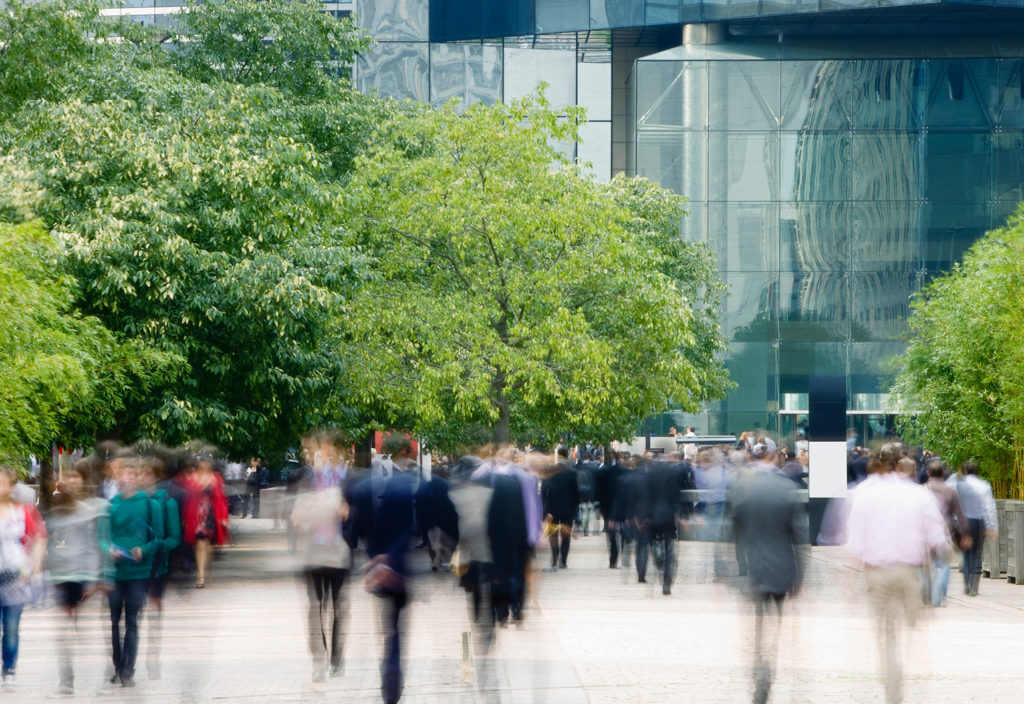Micro-doses of nature benefit our cities and our communities. Researchers share how to incorporate more natural features into our urban jungles.
The benefits of urban greening towards societal wellbeing and the reduction of urban heat have been well documented in the past.
However, as part of a study into greening at Canadian hospitals, an interdisciplinary team including Dr Sara Barron from the University of Melbourne and Dr. Kathleen L. Wolf from the University of Washington found that practical, evidence-based solutions for introducing urban greening were harder to find.
“Studies across multiple decades outline the contributions of urban greening to improving our wellbeing and reducing urban heat,” the pair wrote.
“But we found little work was being done to translate research findings into practical interventions … we found a need for practical evidence-based solutions that can be used by the people responsible for managing our urban spaces.”
To address this gap, Barron and Wolf compiled a set of eight scalable evidence-based urban greening interventions designed to provide city-dwellers with ‘micro-doses’ of nature.
From incorporating greenery within building entrances and providing continuous shaded pathways, through to optimising permeable surfaces and retaining mature trees, the set of solutions are designed to be used by local government and developers in planning urban spaces.
“The evidence of the benefits of green exposure [to humans] has been really increasing,” Barron told create.
“We started with investigating greenery in hospitals, and now we’re starting to have conversations with people in the planning of urban forest strategies as well. It’s in its infancy right now, but it’s starting to increase.”

Urban oasis
The set of eight solutions was compiled as part of a project at the University of British Columbia focussed on incorporating greenery within the design of neighbourhoods.
“We started off by doing an evaluation of where the hospitals are currently, in terms of each of the eight solutions, and measuring them [against these eight interventions],” Barron said.
“For example, when looking at green entrances, some of the hospitals do have enough greenery, but some have no greenery at all … [The set of eight interventions] provides a template and a framework to show people where they could start to implement green within these hospitals.”
So far, the response has been positive.
“The reception has been quite good from the planners,” said Barron.
“The solutions are quite tangible – they’re easy to follow and they’re intuitive … But there can also be conflicting interests [regarding space], particularly in hospitals. Things like parking, ambulance passage routes and basic infrastructure. But we’ve been considering these [factors] from the beginning.”
And what about the air quality benefits to increasing greenery in our cities? Are we likely to see a greater case for urban greening, given the recent bushfire-induced smoke haze impacting cities such as Sydney, Melbourne and Canberra?
Barron notes that while the implementation of these solutions won’t negate these extreme events, increased urban greening does provide air quality benefits when properly designed.
“More canopy is associated with some air quality improvements, but you have to be careful because you can also trap air particles in streets if you don’t design it properly,” said Barron.
“Plants do make a difference, but they have to be carefully designed.”
In summary, the eight solutions are:
- View from within: Incorporate green views from within buildings, as this is found to reduce stress and increase focus.
- Plant entrances: Consider green entrances to buildings, which allow visitors to experience some nature, as well as cleaning and cooling the air that enters the building.
- Bring nature nearby: Provide small greenspaces throughout communities where people can relax near plants. This improves birth outcomes as well as helping to manage stormwater.
- Retain the mature: Retain mature trees in landscape design. Older trees provide greater aesthetic appeal and emotional benefits, as well as exponentially higher ecosystem services like air filtering, cooling and CO2 removal, in comparison to smaller trees.
- Generate diversity: Plant a diverse range of tree species, allowing greater resilience to changes in climate, as well as pets and disease.
- Create refuge: Provide shade protection from extreme heat events through incorporating a continuous canopy.
- Connect experiences: Design continuous shaded pathways to promote physical activity.
- Optimise green infrastructure: Incorporate green permeable surfaces to allow stormwater runoff to escape.
